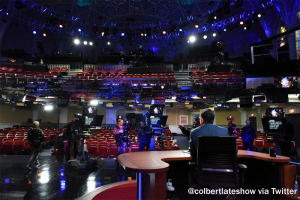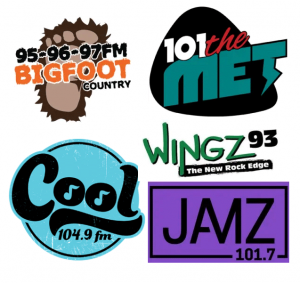NorthEast Radio Watch 11/18/2024: Sims Gets Yankees Callup
In this week’s issue… Yankees hire Dave Sims - Wallace, Maxwell move in NYC - Gray cuts news in Maine - Remembering CT's Pinto By SCOTT FYBUSH Jump to: ME - NH - VT - MA - RI - CT...
By SCOTT FYBUSH


Earlier this week, we brought you The Year in Station Sales (here) and The Year in People and Formats (here and here).
Today, we’re doing the “Top Ten Stories of the Year” portion of our Year in Review, and we’ll wrap up the whole package on New Year’s Day with “Those We Lost.” We’ll resume our regular NorthEast Radio Watch report with an update on Monday, January 4. In the meantime, our own Twitter and Facebook feeds and RadioInsight will be here with any breaking news!
The fourth installment of our Year in Review (catch up on yesterday’s installment here) spotlights what were, in our opinion, the biggest stories of the year across the region we cover. Think we left something out? Weigh in below in the comments…
Normally, we count down in this annual feature, but it would be pointless this year to pretend there’s any suspense about what’s at the top of the list.
There was really only one story that mattered in 2020, at least in the last ten months: the COVID-19 pandemic affected every aspect of life in a way no other single story has in our lifetimes. (And, we hope, in a way no story ever will again.)


Could any of us have imagined then that we’d still be at this as we round the corner into 2021?
The good news – if there was any good news here – is that many broadcasters had the basic building blocks in place to turn swiftly to mostly- or even fully-remote operation. The rise of audio over IP made it easy – well, easier, anyway – to run a radio “console” from a home studio than it would have been just a few years ago.
Inexpensive USB mics, widely available broadband internet service, VOIP phones and nifty new gear like the Rode Procaster mixer all made it possible to duplicate a lot of the functionality of a professionally-built studio from the closets and basements and other makeshift spaces that got draped with blankets and turned into functioning studios for radio.
On the TV side, plenty of anchors and reporters and commentators ended up with home studios, too, as we all learned how to use Zoom and Skype and other tools to do the things that would have required an entire microwave or satellite truck full of equipment a decade earlier. Very little of it was perfect, but plenty of it was good enough.
And that will make for some interesting conversations heading into 2021. Some farsighted broadcasters were already looking at dramatically reducing their physical studio footprints even in the pre-COVID era. A few months before everything changed, we got one glimpse of what that future might look like in the form of iHeart’s new San Antonio studio complex, where a small number of physical spaces can go live or do tracking for any of the stations in the local cluster, or anywhere else in the company.
If you can be that flexible without even requiring a physical console or studio space, it’s no surprise we’re already hearing that some broadcasters are looking at even more dramatic physical downsizing in the months to come.


In 2020, though, it wasn’t just technological development that was reducing head counts. It was the economy, and it was everywhere. The big companies got most of the national attention with the sheer numbers of cuts they made. Even before the pandemic, iHeart’s first round in January left hundreds of its hard-working staffers without jobs, and if the total then wasn’t “a thousand,” as some breathless fearmongers in the business claimed (and as mainstream media repeated without any confirmation), it certainly climbed that high in several subsequent rounds.
It didn’t help, especially in iHeart’s case, that the process was almost cruelly opaque. Who was being cut? Where were the cuts happening? How long would the news keep trickling out? The company wasn’t saying, which meant a level of stress that made the year that much worse, even for the employees whose jobs weren’t eliminated.
Cumulus, Entercom, Townsquare, Stephens, Saga, Connoisseur and others made big cuts, too, as revenues slumped. So did some big public broadcasters, though the depth of the cuts varied; Boston’s WBUR was especially hard hit, it seemed, shutting down its “Only a Game” national sports show entirely, downsizing its “Takeaway” national magazine show and eliminating local hosts at night.
The companies that had been most ambitious about pivoting from spot sales to live events – Galaxy in central New York, Townsquare nationally – were also the most affected by the sudden halt in live events. When you can’t have street teams on the streets and there’s nowhere to do remotes, promotions jobs suffer, of course.
Beyond that, though, it was a year when the cuts seemed to go even deeper than necessary in some areas. If you started 2020 on the air as a middayer or night jock at any of the big companies, the odds were depressingly high that you ended the year without a job.
One of the most infuriating aspects of the cuts, as we saw it, was the piecemeal way in which they seemed (especially at Entercom and iHeart) to be working toward a goal that actually made sense for the radio industry if approached in a more comprehensive way.
In a media environment where so much else is fully national – primetime and syndicated TV, DTV subchannels, satellite radio, digital media of all kinds – the idea of having local talent sitting in dozens of local studios playing more or less the same music and national promotions starts to look anachronistic.
In fits and starts, iHeart and Entercom (and a few others) took stabs at modernizing that model, especially in certain formats. Almost every iHeart country station has Bobby Bones in mornings now, and many of Entercom’s “Alt” stations that lost local talent in 2020 ended up carrying music and airstaff from flagship “Alt” station WNYL in New York.
(There was some movement in the other direction, too: Cumulus all but abandoned its efforts to make “Nash” a national country radio and lifestyle brand, with Scranton’s WSJR one of the last holdouts still using the branding.)
At some point, we’re bound to see a commercial broadcaster follow the lead of EMF’s K-Love and Air 1 networks, using a network of local transmitters with substantial national coverage to create a truly national radio format with the best programming and production talent available. Is it time to rip off the bandage of these incremental steps and go all the way?
Canada’s big broadcasters seemed to be moving faster toward that goal. Bell made some significant expansions of its Pure Country and Virgin Radio brands, especially in Windsor with the end of its long-running 89X and River. Rogers took its Kiss stations in northern Ontario to a more regional approach, cancelling local morning shows, while also centralizing some of its late-night programming nationwide at its all-news AMs – and then Bell upped the ante at year’s end with its new “Move” brand, replacing local AC and hot AC stations from coast to coast. Corus, for its part, kept nationalizing its local Global TV newsrooms, replacing local anchors in Montreal with recorded shows hosted from Toronto.
One format that’s hard to nationalize is sports – the last thing a Boston fan wants to hear is lots of talk about New York or Philly sports, never mind Chicago or LA. In normal times, that’s not a problem, since there’s always plenty of local sports to go around.
Right up until the middle of March, that is. Instead of just one day a year with no pro sports being played (traditionally, the day after baseball’s All Star Game), the abrupt shutdowns of the NBA and NHL seasons and MLB’s spring training left sports talkers with a lot of breaking news for a little while, followed by more than four months of a lot of empty airtime and not a lot to fill the void.
Some stations adapted better than others; in New York, WFAN began sharing some talent with CBS Sports Radio, pulling in its weekday talkers to fill weekday shifts both locally and on the network. (That meant yet another return from “retirement” for the inescapable Mike Francesa, followed by a third retirement, this one likely for good.)
The sports talkers that had always had a knack for talking about more than just sports – think WIP in Philadelphia and Boston’s Sports Hub – pivoted to the new reality and pulled through decently. In many smaller markets, local sports shows went on hiatus; a few smaller stations dropped network-fed sports talk entirely and changed formats. Even a few bigger outlets struggled – New York’s WFAN went through multiple schedule changes, as did the national ESPN lineup, while one established major-market outlet hit such a bad ratings skid that rumors began to fly that it was about to dump the format entirely.
By the end of the summer, a void of sports abruptly turned into a glut; for a while, all four major sports were all playing at once, disrupting fans’ usual seasonal rhythms. Play-by-play crews learned to work remotely or in empty arenas.
2021 is likely to be a transitional year as sports seasons remain disrupted and fans remain excluded from many venues. We’ll be watching closely to see how the sports format weathers the changes, and hoping for more normalcy by 2022.


We were all set to do some traveling: August at Detroit’s WWJ, November at Pittsburgh’s KDKA (which wasn’t the first anything, really, except when it came to the all-important business of promoting the idea of radio as a big business.)
There were, of course, no big parties, even if your editor at least made the drive to Pittsburgh for a very solitary outdoor observance at the now-razed location where that first KDKA election night broadcast took place back in 1920.
As you know if you’ve received your new Tower Site Calendar for 2021, there are more centennials coming in the new year (WBZ, WABC, KYW), and then a flood of them in 2022; here’s hoping we get some actual celebrations by then!
The downside of being a 100-year-old medium, of course, is that celebrating that centennial has to be done carefully. Too many black-and-white photos of old-time announcers in rooftop shacks and you risk the perception that your century-old medium is, you know… old.
The reality in 2020 was that the medium of AM radio was indeed showing its age. Home receivers grew ever scarcer, and even a few newer cars dropped AM radio from their dashboard lineups as the band grew ever noisier. It wasn’t by accident that KDKA used its big anniversary as an opportunity to announce the addition of a new FM translator simulcast; a few weeks later, sister station KYW in Philadelphia picked up a full-power simulcast in an FM swap with Radio One.
Another big threat to the senior band was the rising value of the land under some older AM transmitter sites, exemplified by the stunning $51 million sale of Family Radio’s five acres in Queens under its WFME (1560) towers. Where will 1560 move once it has to abandon that site in early 2021, clearing the way for a new trucking/warehouse facility there? It almost doesn’t matter – at that price, the land under WFME was worth probably ten times what the station itself was.
Yet there was still demand for AM facilities in bigger markets for niche players. On Long Island, one AM changed hands twice at significant profit as South Asian broadcasters jockeyed for dial space; iHeart’s new Black Information Network provided an injection of money that found the company buying or leasing AM signals for the first time in years, including New York’s WWRL and Philly’s WTEL.
As it enters its second century, AM radio is a mature medium, to be sure – but it’s not dead, at least not yet, and we look forward to seeing what stories it’s ready to tell in 2021.


The $12.5 million his Red Apple Broadcasting paid for WABC looked like a bargain, even given the extra costs of relocating the station’s studios to his Third Avenue headquarters. While Red Apple didn’t make many changes to WABC’s weekday lineup of national and syndicated conservative talk, Catsimatidis had fun with his new toy on the weekends. Instead of nonstop infomercials, he brought back some of WABC’s music heritage, hiring Cousin Brucie immediately after his SiriusXM contract ended, then adding another oldies show with Tony Orlando and a Sinatra show with one of his WNYM colleagues, Joe Piscopo. (Catsimatidis also added an FM simulcast on Long Island’s East End, spending less than a million dollars for WLIR on 107.1.)
The changes didn’t light the ratings on fire – but maybe they didn’t need to. An owner who can afford to sustain some short-term expenses while having some fun with his one and only radio station? That’s worth keeping an ear on.
It’s fashionable in some radio circles to blame EMF Broadcasting for so many of radio’s woes – but in order for the giant Christian broadcaster to acquire so many signals in so many markets, three things had to happen: EMF had to put on programming that attracted listener support in big numbers; a lot of commercial broadcasters had to be willing to sell; and not many other potential buyers had to be competing for the chance to buy those signals.
It happened in recent years in Providence (the old WBRU), in New York (Cumulus’ WPLJ), in Philadelphia (Merlin’s 106.9), and in lots of other markets, leaving one very prominent gap in EMF’s K-Love coverage in NERW-land. That was Boston, and it was filled in February when Entercom struck a $10.75 million deal to sell WAAF (107.3) to EMF.
WAAF had been struggling against sagging ratings for its active rock format; its morning show had moved to sports sister WEEI in an attempt to bolster some of that station’s own weaknesses, and local management in Boston was planning a fairly substantial relaunch even as Entercom’s national leadership was working out the deal to sell WAAF’s signal.
With the addition of several smaller New England signals from Steve Silberberg later in the year, EMF’s K-Love coverage of NERW-land is getting closer to completion; its biggest holes now are mostly outside our region, especially in some big chunks of Florida and Texas where the company is no doubt hard at work looking for buying opportunities.


There weren’t a lot of other big format changes in 2020, either – unless you were a country listener in the Elmira-Corning market, or an oldies listener, or a hip-hop listener, or a rock listener, or a news-talk listener.


The Elmira-Corning market is a weird artificial amalgamation of several small and medium communities, with no one signal that actually covers the entire “market,” which extends for more than 50 miles west to Bath and Hornell and north up to Watkins Glen. The Seven Mountains shuffle took advantage of HD subchannels (including a newly installed HD transmitter at the Hornell end of the market) and translators to extend more of its new formats to outlying parts of the market: unlike its country predecessor, which could be heard only in Elmira, the new “Bigfoot Country” has three strong signals in Elmira, Corning and Hornell; while translators and subchannels extend classic rock “Met” and classic hits “Cool” beyond their previous Corning and Elmira bases, augmented by Elmira-specific translator signals carrying active rock “Wingz” and hip-hop “Jamz.”
Remarkably, all of those formats share a single morning show, with Scott and Ally (of top-40 “Wink 106,” the one Seven Mountains format unaffected by the shifts) recording breaks that run with different music on each station.
After some initial hiccups with the complicated transition, the market has settled down… just in time for 2021 to bring another Seven Mountains consolidation, an hour to the west in the Olean market.
> > > Coming Friday, January 1: Those We Lost
 The landmark 24th edition of the world-famous Tower Site Calendar is in production, and your support will determine whether it will be the final edition.
The landmark 24th edition of the world-famous Tower Site Calendar is in production, and your support will determine whether it will be the final edition.
It’s been a complicated few years here, and as we finish up production of the new edition (including a cover reveal, coming later this week!), we’re considering the future of this staple of radio walls everywhere as we evaluate our workload going forward.
The proceeds from the calendar help sustain the reporting that we do on the broadcast industry here at Fybush Media, so your purchases matter a lot to us here – and if that matters to you, now’s the time to show that support with an order of the new Tower Site Calendar. (And we have the new Broadcast Historian’s Calendar for 2025 ready to ship, too. Why not order both?)
Visit the Fybush Media Store and place your order now for the next calendar, get a great discount on previous calendars, and check out our selection of books and videos, too!
In this week’s issue… Yankees hire Dave Sims - Wallace, Maxwell move in NYC - Gray cuts news in Maine - Remembering CT's Pinto By SCOTT FYBUSH Jump to: ME - NH - VT - MA - RI - CT...
In this week’s issue… iHeart axes Boston, NYC morning shows and more - Cumulus cuts in central PA - Southern Tier combo saved from silence - Ottawa FM relaunches - K-Love buys in the Burgh - Scranton gets "Loud" -...
In this week’s issue… "Hot" cools down in Providence, CT studios closed - GBH to sell Cape studios - A HEBA in Hamden? - New HDs in New York - Another Canadian AM to close
In this week’s issue… GBH shuffles mornings, prepares new show launches - NYSBA inducts Hall of Famers - More news-talk in the Hudson Valley - Remembering Dan Sys